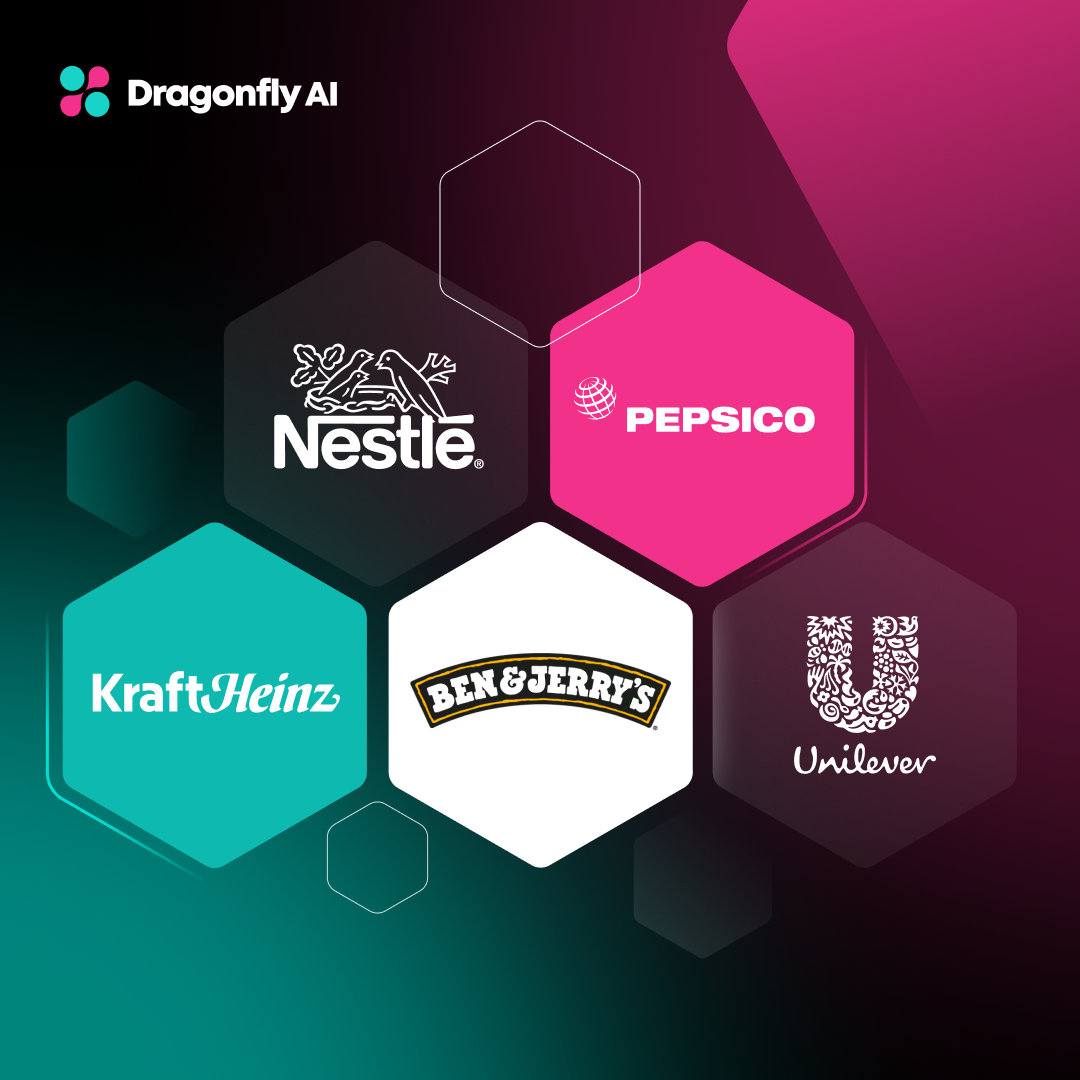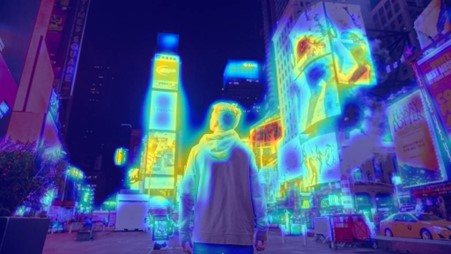What is a planogram?
A planogram is an essential detailed visual guide that shows the best way to arrange products on shelves or displays within a store. This strategic tool specifies the exact placement of each product to boost sales and enhance the shopping experience.
Planograms consider factors like product positioning, shelving guidelines, facings, and customer behavior to ensure that high-demand and high-margin items are prominently displayed for maximum visibility and accessibility. Planograms also help in efficiently utilizing store space, contributing to increased customer satisfaction and revenue.
Planograms maximize sales potential through strategic product placements, ensuring that products are positioned to enhance visibility and drive sales growth.
This method improves the store's visual appeal and aids in effective inventory management, consistency across multiple stores, and efficient employee training, ultimately leading to a more organized and profitable retail environment.
Planograms increase sales by placing high-margin products in prominent positions, such as at eye level and near checkout counters. This strategy enhances visibility and drives impulse purchases, significantly boosting sales within the first quarter. Retailers can manage space more effectively during seasonal peaks by using planograms to optimize and adjust product placements based on demand. Rotating in-season items to the front and reallocating shelf space ensures that the most relevant products are always highlighted, increasing seasonal sales.
How Planograms Influence Consumer Behavior
Planograms shape purchase decisions by strategically aligning product placement with consumer buying habits and shelf psychology. Eye-level positioning is particularly influential, as products placed at this height are more likely to catch the shopper's eye and be perceived as more desirable, thereby increasing the likelihood of purchase.
Shelf psychology examines how consumers interact with product displays and categories, showing that shoppers tend to gravitate towards prominently displayed or logically organized items.

By using planograms to place high-demand items at optimal heights and visually appealing arrangements, retailers can effectively harness these psychological insights to boost sales and enhance the overall shopping experience.
Additionally, incorporating consumer data such as shopper demographics, preferences, and shopping patterns into the layout ensures that the planogram is tailored to meet the specific needs and behaviors of the target audience.
These results demonstrate how planograms can be powerful tools for driving retail success and improving the bottom line and customer experience.
Results Retailers Have Achieved Using Planograms
Kroger
Kroger repositioned product categories and optimized shelf space with planograms, resulting in a 15% increase in sales for specific categories like beverages and snacks. The grocers' strategic placement of these items in prominent locations increased their visibility and sales.
Walgreens
Walgreens enhanced the visibility of promotional and seasonal products using planograms. This approach led to a 20% increase in sales during promotional periods, as customers were more likely to notice and purchase the featured items.
How to Read a Planogram: Key Elements and Best Practices
Now the question is what does planogram mean for your organization? Let’s discuss how to maximize the value of a retail planogram.
Analyzing data at the store level is crucial for effective planogramming. Store-specific insights, such as sales and customer behavior, help in making informed decisions that enhance inventory management and improve overall store performance.
A planogram specialist plays a vital role in optimizing product placement on retail displays. By analyzing sales patterns, they ensure that the planograms meet customer behavior and sales objectives, distinguishing their role from that of a visual merchandiser.
Build the Foundation of Your Planogram in 10 steps
- Understand Your Objectives
- Sales Goals: Increase sales, improve customer flow, or showcase new items.
- Customer Experience: Create an intuitive shopping experience.
- Merchandising Strategies: Consider product grouping (e.g., by category, brand, or price range).
- Gather Data
- Sales Data: Understand which products perform well.
- Product Dimensions: Know the size and space requirements for each product.
- Inventory Levels: Factor in how much stock needs to be displayed.
- Shelf Space Measurements: Measure the shelving area to understand how much room you have to work with.
- Choose Planogram Software

A Step-by-Step Guide for How to Read Planograms
Product Positioning: Identify where each product is placed on the planogram. This will show you how products are arranged on the shelf or display.
Facings: Determine the number of facings for each product, which refers to how many units are visible from the front. More facings typically indicate higher visibility and potential sales.
Vertical Merchandising: Observe the vertical arrangement of products from top to bottom. This arrangement can influence purchasing decisions, with higher-margin items often placed at eye level to attract more attention.
Color Coding, SKU Information, and Space Allocation Guidelines
Color Coding: Look for color-coded sections on the planogram that distinguish different product categories, promotions, or unique displays. This helps quickly identify product groups and their placement.
SKU Information: Check the SKU details provided on the planogram to ensure accurate stock levels and product identification. This information aids in proper stocking and replenishment.
Space Allocation Guidelines: Review the guidelines on how shelf space is allocated to various products. This includes how much space each product should occupy, which is crucial for optimizing product visibility and inventory management.
Key Retail Metrics Linked to Planograms
KPIs Driven by Planograms:
- Sales per Square Foot: Measures how effectively the allocated shelf space generates revenue. Higher sales per square foot indicate more efficient use of space.
- Inventory Turnover: Indicates how quickly products are sold and replaced. Efficient planograms can help improve inventory turnover by minimizing stockouts and overstock situations.
- Margin Impact: Assesses the profitability of product placements. Proper planogram design can enhance margin impact by positioning higher-margin products in prime locations.
How to Assess and Optimize the Effectiveness of Planograms Using Store Data
- Utilize your internal data and the metrics mentioned above to evaluate your planogram’s performance.
- Use sales data and customer feedback to assess the current planogram's performance. Look for trends and patterns that indicate which products are underperforming or excelling.
- You should continuously track, test, and adjust based on the data you receive. Modify the planogram based on the collected data to optimize product placement and increase sales. Adjust facings, product positions, and space allocation to improve overall store performance and efficiency.
How to Create an Effective Planogram
Utilizing Consumer Insights: Integrate consumer insights into planogram design by analyzing customer purchasing behaviors and preferences. This helps place high-demand products in prominent locations, enhancing customer satisfaction and driving sales.
Trends and Seasonal Adjustments: To inform your planogram design, stay updated on market trends and seasonal demands. Adjust product placements to reflect these trends, ensuring the store remains relevant and appealing to customers.
Combining Creativity with Analytics: While creative visual merchandising can attract customers, data-driven decisions ensure these designs meet performance goals. Use data to validate creative choices, optimizing both aesthetics and functionality.
How to Make a Planogram: Tools and Software to Streamline the Process
Merchandising Software Solutions: Utilize specialized planogram software such as Nielsen Spaceman, JDA Space Planning, or Blue Yonder. These tools provide advanced features for designing and visualizing planograms, making the process more efficient and accurate.
3D Visualization and Simulation: Before implementation, leverage software that offers 3D visualization capabilities to see how products appear on shelves. This helps assess the effectiveness of the layout and make adjustments as needed.
Integration with POS Data: Use software with Point of Sale (POS) systems to access real-time sales data. This integration allows for data-driven decisions in planogram design, improving alignment with actual sales performance.
Testing and Optimizing Planograms
A/B Testing Different Designs: Conduct A/B testing by implementing different planogram designs in various store locations or sections. This approach allows you to compare each design's performance and determine which drives better sales and customer engagement.
In-Store Creative Testing: Refine your planograms using real-world customer behavior and sales data. Monitor how customers interact with different layouts and placements to gain insights into what works best in a live environment.

Incorporating Feedback Loops: Establish feedback loops by regularly reviewing sales data, customer feedback, and employee input. Continuously refine planograms based on this data to ensure ongoing improvement and adaptability to changing market conditions.
Now let’s dive into what is a planogram in merchandising.
Impact on Brand Identity and Store Aesthetics
Planograms are essential for maintaining and enhancing brand identity and aesthetics. Providing a visual guide for product placement ensures that store layouts reflect the brand's image and values.
This consistency reinforces brand recognition and creates a cohesive shopping environment that aligns with marketing campaigns. An aesthetically pleasing and brand-aligned store layout attracts customers and fosters a positive and memorable shopping experience.
Enhancing Shopper Experience Through Strategic Merchandising
Well-executed planograms significantly improve the customer experience by creating a logical and navigable store layout. These visual guides help organize products in a way that guides customers smoothly through the store, making it easier to find what they need.
Strategic use of planograms also involves cross-merchandising and product adjacencies, which can encourage impulse buying by placing complementary products together. This thoughtful arrangement not only maximizes sales opportunities but also enhances the overall shopping experience by presenting products in a relevant and accessible manner.
Utilizing Consumer Insights for Effective Planogram Design
Data-Driven Merchandising Decisions
Utilizing sales data, foot traffic patterns, and shopper preferences is crucial for creating effective planograms. By analyzing these data points, retailers can identify which products to highlight and where to place them to maximize visibility and sales. For example, high-traffic areas can showcase best-sellers or promotional items, while less frequented spaces might display seasonal or niche products.
Consumer insights help customize planograms for different store formats and customer segments. Various store sizes and types—such as flagship stores versus smaller locations—require unique strategies. By understanding the specific needs and behaviors of different customer segments, retailers can design planograms that cater to each group's preferences and shopping habits, enhancing the overall shopping experience.
Personalization and Localization in Planogram Design
Adapting planograms to regional preferences and market trends ensures product assortments are relevant to local shoppers. This might involve incorporating region-specific products or adjusting displays based on local events or seasonal trends. For instance, a coastal store's planogram might prominently feature beachwear during summer, while a store in a colder region might highlight winter apparel.
Retailers often tailor planograms for localized product assortments, and customers need to serve their communities better. For example, a grocery chain might adjust its planograms to feature popular local brands or specialty items based on regional tastes. In contrast, a national chain may tailor displays to highlight popular products in specific markets.
Predictive Analytics in Planogram Optimization
Leveraging AI and machine learning allows retailers to predict customer behavior and optimize product placement effectively. Predictive analytics can analyze past sales data and current trends to forecast future demand, helping retailers adjust their planograms to align with anticipated shopper needs. This technology enables retailers to stay ahead of market trends and customer preferences.
Predictive models can guide the layout for new product launches or seasonal trends by forecasting which products will perform well. For example, suppose data suggests a particular product will become a trend. In that case, retailers can strategically place it in high-visibility areas or create prominent displays to capitalize on its expected popularity, boosting sales and customer engagement.
The Importance of Instore Creative Testing
How in-store creative testing helps retailers gauge the effectiveness of product placement:
Evaluating Product Placement through In-Store Creative Testing
In-store creative testing enables retailers to assess the impact of different product placements on sales and customer behavior. By experimenting with various layouts and visual merchandising techniques, retailers can discover which arrangements drive higher engagement and conversions. This iterative process helps refine product placements to meet shopper expectations and maximize sales potential.
The Importance of Experimentation for Different Demographics
Experimentation is vital to finding the optimal product arrangement for various customer segments. Retailers can test different setups tailored to specific groups, from families to millennials to seniors, for a better understanding of their preferences and shopping habits. This targeted approach helps create store environments that resonate with diverse shopper profiles, enhancing the overall shopping experience.
Testing Product Placement Variations
Testing multiple planogram versions allows retailers to determine the most effective store layout. By deploying different product arrangements, retailers can compare performance metrics like sales volume, customer dwell time, and interaction rates. This process ensures that the chosen layout is optimized for maximum effectiveness and aligns with business goals.
Real-Time Data Collection
Collecting real-time data during tests is crucial for tracking customer engagement and purchasing behavior. Retailers can use heat maps, sales tracking software, and customer feedback to gather insights into how shoppers interact with various product placements. This immediate feedback helps make data-driven decisions and adjust the planogram based on real-world performance.
Analyzing Results to Inform Retail Decisions: Data from creative testing provides valuable insights that inform future merchandising strategies and planogram updates. By analyzing test results, retailers can identify patterns and trends that guide the development of more effective store layouts. This data-driven approach helps optimize product placements to meet customer needs better and drive sales.
Continuous Improvement through Feedback Loops: The feedback loop created using creative test data allows for continuous refinement and improvement of store layouts. Retailers can iteratively adjust their planograms based on test outcomes, ensuring that store environments remain dynamic and responsive to changing shopper preferences and market conditions. This ongoing process of evaluation and adjustment helps maintain a competitive edge in the retail landscape.
Planograms and the Future of Retail Merchandising
Here are a few ways you can enhance planogram creation with AI-powered tools:
Analyzing Massive Datasets and Predicting Trends
AI-driven tools can significantly improve planogram creation by processing and analyzing large datasets. These tools use machine learning algorithms to examine sales history, customer preferences, and market trends, providing actionable insights for optimizing product placement.
By predicting emerging trends and understanding purchasing patterns, AI helps retailers design planograms that align with future demand and maximize sales potential. This foresight aids in planning for new product launches and seasonal changes, ensuring that planograms are always up-to-date with the latest trends and consumer interests.
The Growing Use of IoT and Smart Shelves
Integration with Dynamic Planograms: Integrating IoT (Internet of Things) and intelligent shelves with dynamic planograms marks a significant advancement in retail technology. Smart shelves with sensors can track inventory levels in real time and provide data on product movement and customer interactions. This information helps adjust planograms dynamically to reflect current stock levels and optimize product placement based on actual performance.
IoT technology enhances planogram accuracy by offering real-time feedback on product performance. Retailers can use this data to make immediate adjustments, ensuring that the planogram adapts to changing conditions and customer preferences, thereby improving the efficiency of store operations and inventory management.
Omnichannel Retail and the Role of Planograms
Supporting Online and Offline Retail Strategies: Planograms are crucial in supporting omnichannel retail strategies by creating a cohesive shopping experience across online and offline channels. Consistent product placement and visual merchandising strategies help maintain brand integrity and ensure that customers receive a unified experience, whether shopping in-store or online. Integrated planograms align physical store layouts with digital marketing efforts and online promotions.
The future of planograms in phygital (physical + digital) store experiences involves blending physical and digital elements to enhance customer engagement. Innovative technologies, such as augmented reality (AR) and interactive digital displays, can be incorporated into planograms to create immersive shopping experiences that bridge the gap between online and offline environments.
Sustainability and Planograms
Minimizing Waste and Supporting Sustainable Practices: Planogram strategies prioritizing sustainability focus on minimizing waste and supporting eco-friendly retail practices. This includes designing layouts that reduce excess packaging, promote the use of sustainable materials, and optimize the placement of eco-friendly products. Effective planogram design can also encourage the efficient use of space, reducing the need for frequent restocking and minimizing waste.
Another critical aspect of sustainable planogram strategies is using data to optimize product flow and reduce excess inventory. By analyzing sales patterns and inventory data, retailers can adjust planograms to prevent overstocking and ensure that products are available in the right quantities. This approach reduces waste and helps maintain a more sustainable and efficient supply chain.
Planograms as a Critical Tool for Retail Success
Planograms are essential for optimizing product placement and enhancing store performance. By providing a detailed visual guide for arranging products, planograms ensure that high-demand and high-margin items are positioned for maximum visibility and accessibility.
Using a strategic planogram approach, you can improve the store's visual appeal and manage inventory more effectively, ensure consistency across locations, and enhance employee training. Retailers have successfully used planograms to boost sales by strategically placing products, managing space during seasonal peaks, and maintaining a consistent brand presentation, leading to a more organized and profitable retail environment.
Learn more benefits of your retail organization being agile.
Read more:
Retail Media Trends 2025 - Predictions for CPG Companies
Supercharging Growth Through Retail Analytics





